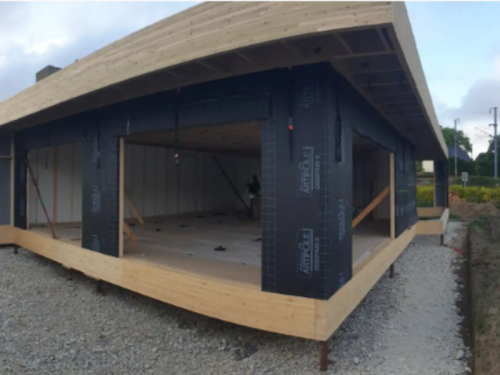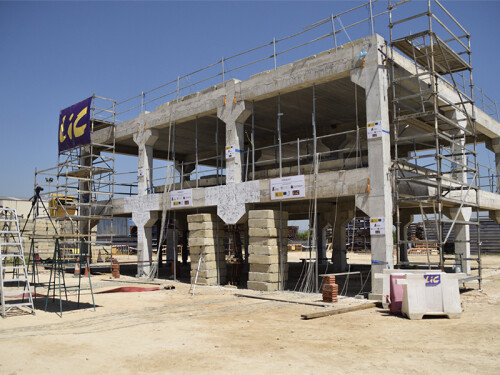The brick that builds walls faster and without concrete
.png)
An Australian student has developed Linko, an innovative system of recycled plastic parts designed to join bricks together to build walls.
Behind ground-breaking technological solutions, there is a great deal of work, coupled with an obvious simplicity. It is a common reaction to think, "Why didn't I think of this idea sooner?" Therein lies the effectiveness and brilliance of certain inventions. This phenomenon is frequently observed in developments in the construction sector, where products such as light and resistant bricks or Lego-like assemblies are becoming more and more common, even in Spain.
What is fascinating is the multitude of different approaches or paths leading to the same destination. Keagan Howell, a student at the Royal Melbourne Institute of Technology (RMIT) in Australia, was looking for an alternative to reduce the construction industry's heavy reliance on cement. This highly polluting material contributes significantly to climate change. Recycling plastic, another environmentally damaging material, seemed like the perfect resource.
Instead of producing bricks directly from plastic, as others have done, Howell imagined a system of recycled plastic pieces that act as connectors for the bricks. These connectors allow the bricks to be interlocked quickly, easily and cheaply, eliminating the need for cement. This invention, dubbed "Linko", won him a James Dyson Award finalist in his home country and aims to revolutionise the construction industry in the future.
Howell, in addition to his studies at RMIT, also owns a 3D printing company. Here he had been researching methods to reduce the huge amount of plastic waste generated and consequently its environmental impact, especially in developing countries.
This led him to conceive Linko, seen as an "opportunity to reuse plastic waste by harnessing this abundant resource within the construction sector". If adopted widely across the industry, Linko could divert and dispose of massive amounts of plastic waste material, encouraging the development of a sustainable closed-loop circular economy, the project report submitted to the James Dyson Awards states.
Howell had identified the ideal material, but needed to determine the right composition and shape for the parts. Initially, he explored the possibility of using polymeric additives to improve the plastic's properties. However, initial tests revealed that this approach did not overcome the drawbacks of the material such as its high flammability. He needed another solution to fully comply with strict building regulations.
The key was to incorporate another building material into the idea: masonry bricks, known for their exceptional fire resistance and durability. The challenge was to find a way to join them together. He turned to computer modelling to explore various methods of quickly and efficiently joining the two materials.
To test the most suitable solution in real-world conditions, Howell 3D printed several 1/10th scale models and evaluated their performance, refining the design through trial and error. The engineer continually improved both the inserts and the bricks, using them for load case force simulations, with very positive results.
This marked the start of Howell's production of the first full-scale 3D printed Linko inserts, along with handmade masonry brick prototypes to test its capabilities in practical applications.
When it comes to using, Linko unleashes its full potential without requiring any specific skills. The experience is similar to assembling Lego pieces but in the field of masonry. Instead of using conventional cement or mortar to join bricks together to build walls, Howell's invention uses inserts and the two holes present in each masonry brick to facilitate effortless assembly.
The inserts fit precisely and securely into the holes in the bricks, making it quick and easy to create sturdy structures. For corners, Howell has designed 90-degree inserts, which ensure a stable connection even in these difficult scenarios."
References:
El ladrillo que cambiará la construcción: levanta paredes más rápido sin utilitzar hormigón | El Español, Omicrono, Retrieved September 25th, 2023 from: https://www.elespanol.com/omicrono/tecnologia/20230925/ladrillo-cambiara-construccion-levanta-paredes-rapido-sin-utilizar-hormigon/796170688_0.html
Linko Construction System | Youtube, Keagan Howell, Retrieved September 21st, 2023 from: https://www.youtube.com/watch?v=Nnyp8eCkriw
Linko – Masonry Construction System | The James Dyson Award, Retrieved September, 13th, 2023 from: https://www.jamesdysonaward.org/es-ES/2023/project/linko-masonry-construction-system/


